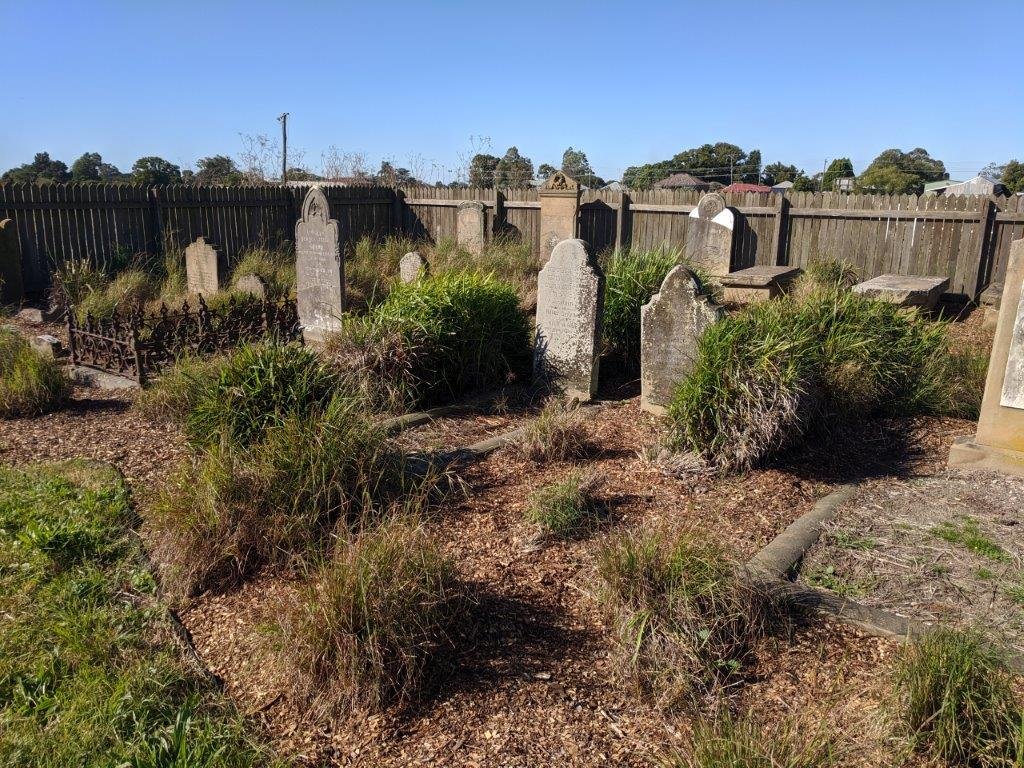Maitland Jewish Cemetery
“members of the Hebrew persuasion have purchased a piece of ground ... as a burial ground for the dead of their faith.”
This announcement marked the beginning of the Maitland Jewish Cemetery located off Louth Park Road in south Maitland.
Given NSW State Heritage status in 2014, the first of the 56 recorded burials in the cemetery were in 1849. With the exception of a 2010 burial, all other burials occurred between 1849 and 1934.
A corner of the cemetery, April 2021.
The photograph was taken after extensive conservation and landscaping work.
The cemetery is a marker of the significant role Maitland's early Jewish community played in establishing colonial Maitland as the centre for trade and commerce north of Sydney. Here you can find, for example, monuments to people and families associated with the thriving enterprises of David Cohen and Company, Joseph Marks' Commerce House, the Hart family's businesses, and Morris Benjamin’s boot store.
Maitland City Council’s brochure Encounters with Maitland’s early Jewish community provides an introduction to, and a guided walk of, some of the sites that evoke stories about these enterprises.
The cemetery is also a marker of the diversity of the local Jewish community at the time. People buried there were born in England, Poland, Germany, Hungary, Russia and Australia. There are convicts and the descendants of convicts; tradespeople and labourers; wealthy and poor.
The Hebrew inscriptions on most of the gravestones and the occasional Jewish symbols indicate the importance and challenges of maintaining Jewish traditions in an Australian frontier town. These connect to the local synagogue that supported the community from 1879 to 1898.
Maitland Synagogue, late 19th century.
(Australian Jewish Historical Society)
The synagogue building was listed on the NSW State Heritage Register in 1999.
Maitland Jewish Cemetery also echoes with patterns familiar to the challenges of colonial life. Almost half of those buried in the cemetery are infants and children, reflecting the high mortality rate among the young during the nineteenth century. There are deaths from outbreaks of scarlet fever and other infectious diseases. There are also deaths due to rural accidents and living near waterways.
Many of the gravestones are made from local Ravensfield sandstone and by local stonemasons. The fineness of the material and the hard and skilled labour involved are etched in the inscriptions, the carving and the forms of the monuments.







Examples of the inscriptions and carvings on some of the gravestones.
The first photograph dates from the early 20th century before the cemetery fell into neglect. The remaining photographs were taken during and after conservation work.
Neglected for some time, over the last decade the cemetery has undergone conservation work under the supervision of Maitland City Council and with the assistance of NSW Heritage grants. Previously broken and fallen gravestones have been repaired, weeds replaced by vegetation, and a much needed new paling fence installed.










Views of the cemetery in the 1970s, 2009, and in 2021 following conservation work.
Maitland Jewish Cemetery is a reminder of Maitland’s early and significant Jewish community, Maitland’s development as a key centre of trade and commerce north of Sydney, the challenges of living in a New South Wales frontier town in the nineteenth century, and the work involved in cherishing and conserving local sites that connect to the diverse and rich history of the locality.
References
Encounters with Maitland’s early Jewish community (brochure and heritage walk), Maitland City Council, 2017.
Maitland Jewish Cemetery, Maitland City Council - resources.
‘Maitland Jewish Cemetery’, Views of Maitland (online database), S3.
Maitland Jewish Cemetery: place, people and paintings.
Wilton, Janis, Maitland Jewish Cemetery: A monument to dreams and deeds, Maitland Regional Art Gallery, Maitland, 2010.
Wilton, Janis, ‘Our past: how our heritage-listed Jewish cemetery came about’, Maitland Mercury, 9 August 2020.


